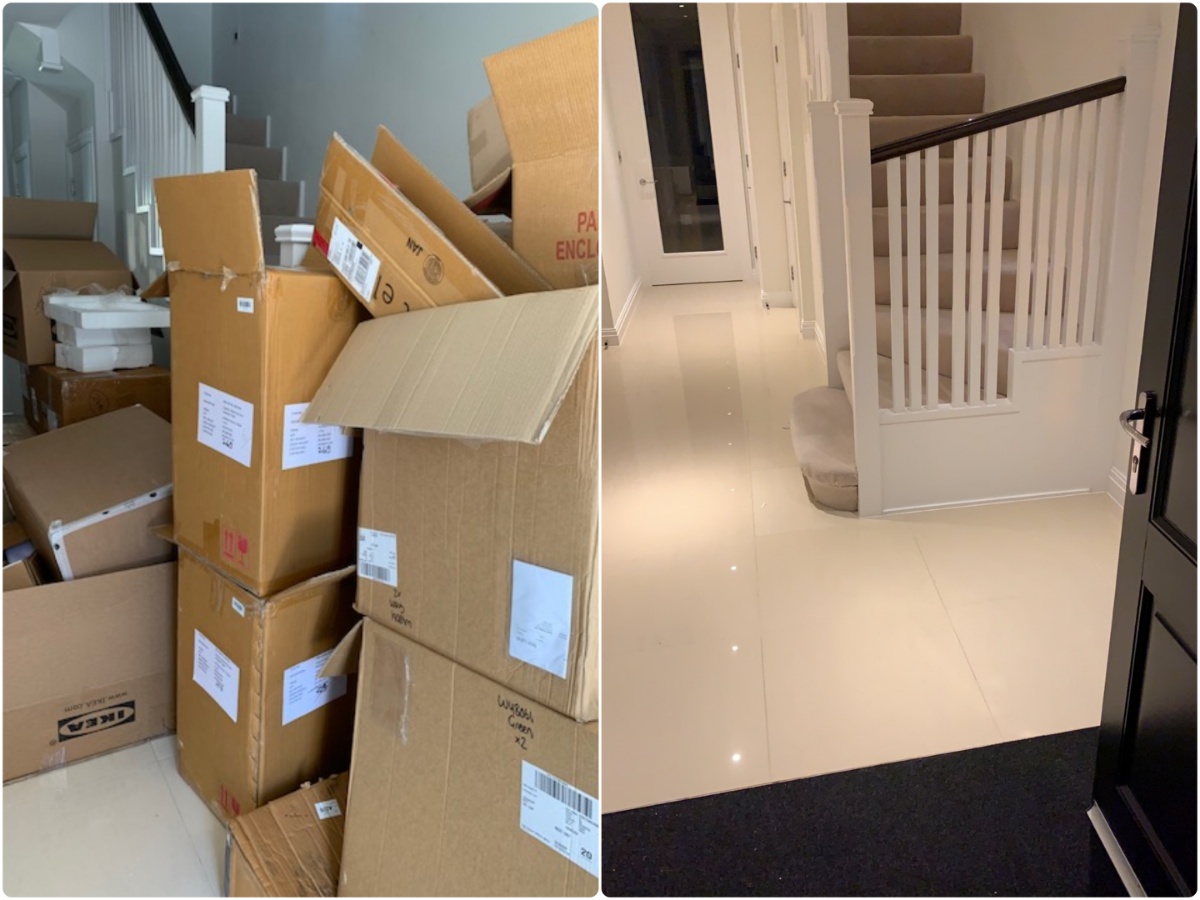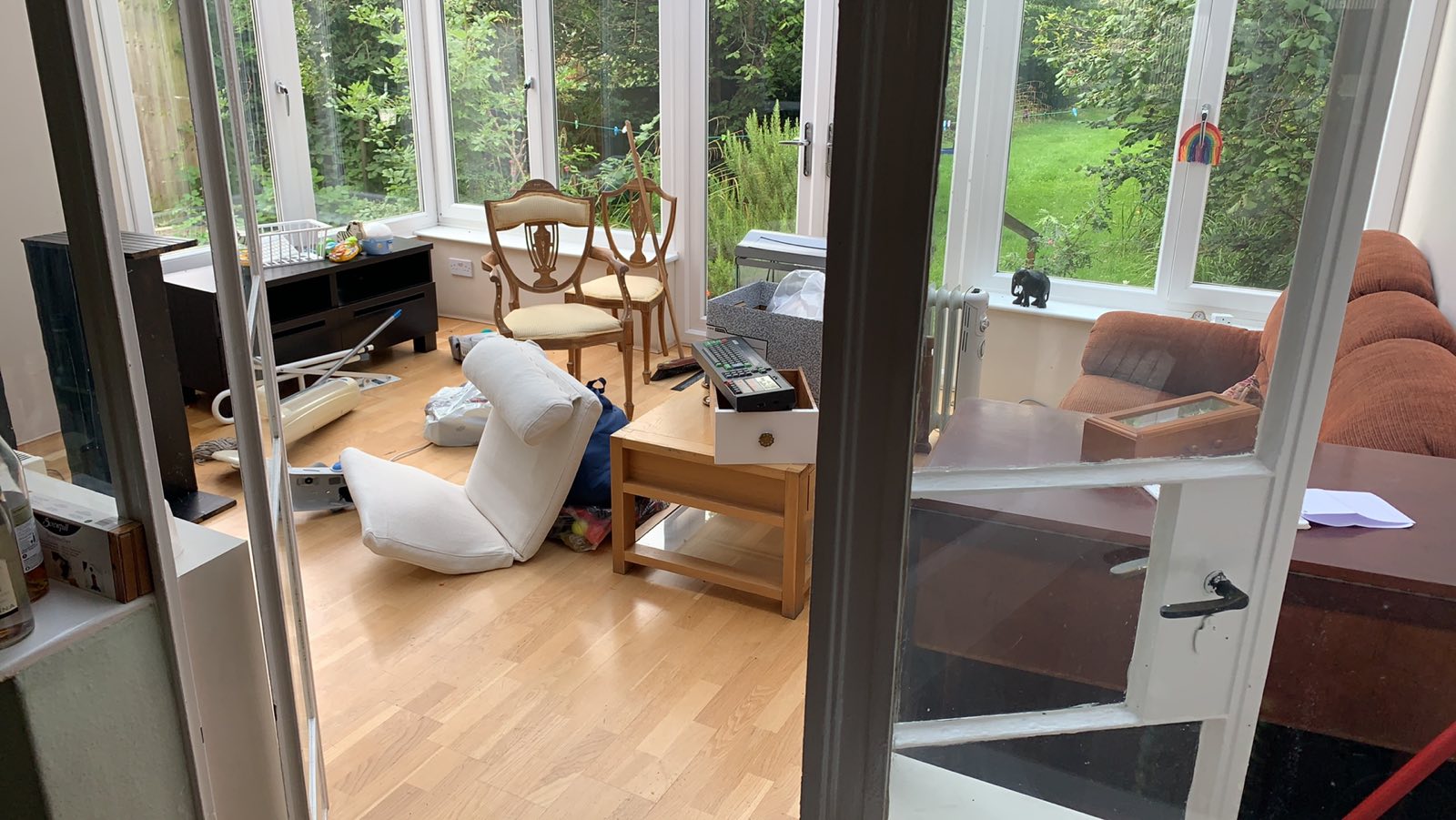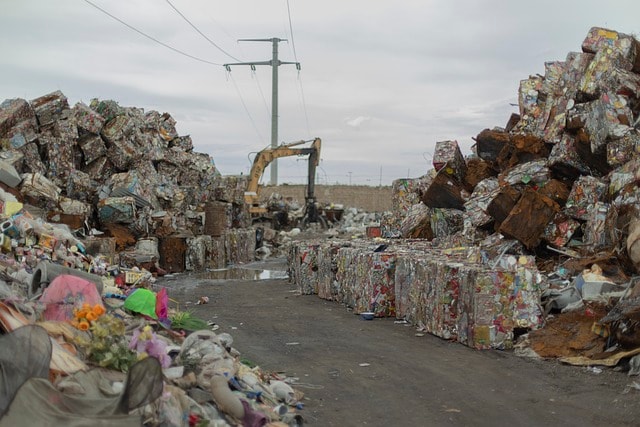House clearance doesn’t have to mean loads of waste or clutter. By using eco friendly methods you can reduce the impact of your house clearance. Here are 12 tips to help you clear out unwanted items efficiently and responsibly.
12 Tips for Sustainable House Clearance: Plan and Categorise
Efficient house clearance involves dividing your household items into 4 categories: recycle, donate, keep, and dispose. Label items and use storage containers for easy identification. Create a checklist to stay organised and save time, preventing anything from getting missed.
1.1 Understanding the House Clearance Process
Understanding the house clearance process is essential to ensure a smooth and efficient experience. House clearance involves the removal of unwanted items, furniture, and household goods from a property.

This process can be overwhelming, especially when dealing with a large amount of items or sentimental belongings. It’s crucial to approach the process with a clear plan, considering factors such as the type and quantity of items, the size of the property, and the desired outcome.
By having a well-thought-out strategy, you can navigate the house clearance process more effectively, reducing stress and ensuring that all unwanted items are dealt with appropriately.
1.2 Assessing Your Space and Belongings
Assessing your space and belongings is a critical step in the house clearance process. This involves evaluating the condition, quantity, and type of items in your home, including furniture, household goods, and personal belongings.
It’s essential to identify items that are no longer needed, broken, or hazardous, and to determine the best course of action for each item. This assessment will help you decide what to keep, donate, sell, or dispose of, and will inform your overall clearance strategy.
By thoroughly assessing your space, you can ensure that the house clearance process is organized and efficient, making it easier to manage and execute.
2. Organizing and Packing
Organizing and packing are crucial steps in the house clearance process. Once you’ve assessed your space and belongings, it’s time to start organizing and packing items for removal, donation, or storage.
This involves categorizing items into groups, such as keep, donate, sell, and dispose of, and packing them accordingly. It’s essential to use sturdy storage containers and to label them clearly to ensure that items are easily identifiable and accessible.
Consider using color-coded labels to differentiate between items destined for different locations, such as the charity shop or the recycling center.
Proper organization and packing will streamline the house clearance process, making it more manageable and less time-consuming.

3. Donate Unwanted Items
Donating items to local charities is an eco-friendly way to give usable items a second life. Many local charities accept clothing, furniture, and household items.
Online platforms like Facebook Marketplace are also great places to find new homes for items that still have value.
4. Sell Valuable and Usable Items
For items with value consider a garage sale or sell them online. This will help you recoup some costs and give items a longer life and reduce waste. Larger bulkier items or electronic devices can often be resold or rehomed to avoid landfill disposal.
5. Use Professional House Clearance Services
Using a house clearance service has many benefits. A house clearance company can provide eco friendly disposal methods for items that can’t be donated or sold, like hazardous materials.
They will also ensure the clearance is done in accordance with local regulations and safety guidelines, keeping you and the environment safe.

6. Use Eco Friendly Disposal for E-Waste and Hazardous Materials
Unwanted belongings, including electronic waste and hazardous materials like batteries, need to be disposed of responsibly to avoid environmental damage.
Many local authorities or waste management services have specific recycling centres for these items so they don’t end up in landfill. Council collection services are available for items that need special handling.
7. Repurpose and Recycle Household Items
Items like large furniture, glassware and other reusable items can often be upcycled or repurposed within the home or for other uses.
For fragile items consider using eco friendly packing materials like cardboard or biodegradable bubble wrap instead of single use plastics.
8. Use Space Saving Storage to Maximise Space
When preparing for a sustainable house clearance investing in storage solutions like vacuum sealed bags and vertical storage containers will help you organise seasonal clothing, fragile items or household items you want to keep.
Space saving storage declutters and minimises waste by keeping everything within easy reach so you can’t lose or damage items.
9. Dispose of Large Items Through Local Authorities
Some items are too big to dispose of normally. Contact your local council for collection services for items like sofas, large appliances or large cardboard.
They often have special disposal services for large items so they are handled properly and don’t end up in landfill.
10. Use Recycling Options
Recycling is key to reducing waste. Separating recyclables like paper, plastics, glass and metals reduces your contribution to landfills.
Many recycling centres accept e-waste and glass bottles which would take years to decompose. Use these services as part of your sustainable waste management.

11. Get Family Involved
Finally get the family involved in the clearance process. Working together to sort, categorise and label items makes house clearances faster and more manageable.
Plus it’s an opportunity to practice sustainability as a household and get everyone on board with an eco conscious mindset.
12. Final Check and Completion
The final check and completion stage of the house clearance process involves a thorough inspection of the property to ensure that all items have been removed, and that the space is clean and tidy.
This is also an opportunity to check for any remaining items, such as hazardous materials or garden waste, and to arrange for their disposal.
Once the clearance is complete, it’s essential to take a final walk-through to ensure that the property is empty and ready for its next use.
This stage is critical in ensuring that the clearance process is completed efficiently and effectively, and that the property is left in a safe and secure condition.
By conducting a final check, you can be confident that the house clearance has been thorough and that the space is prepared for whatever comes next.
Conclusion
Sustainable house clearance is possible with planning and eco friendly disposal methods. Follow these 12 tips and you’ll clear your home and reduce waste and environmental impact and have a stress free living space.

 CALL NOW
CALL NOW